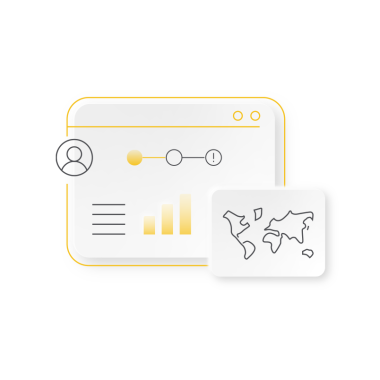We received a number of diligent questions from the webinar audience. The responses shared by our Product Experts are listed below:
How can you maintain multi-modal visibility in Transport Operations?
Transport Operations leverages the power of the Transporeon platform by connecting to carriers directly through API, and also to our Visibility Hub, which is the heartbeat of our visibility. Visibility Hub’s powerful AI capabilities enable us to acquire real-time ETA, asset positions and arrival/departure milestones, via its vast connectivity with onboard telematics, seaport and terminal integrations. It also aids tracking capabilities of ocean vessels and much more. Our data model has been built from the ground up, to model multimodal transports, taking into account all types of variations. For example, an end-to-end shipment that is being managed by a freight forwarder, or a multi-tiered approach, where specific haulages are managed by an NVOCC and subsequent carriages by the shipper. Transports Operations has the capability to manage the execution of multiple containers and visibility on the SKU line level.
Through our tight integration with Visibility Hub, we can obtain relevant positioning data that is mapped toward the assets and the SKU being shipped. Our users are able to track the movement of their cargo through the various intersections/stops as the shipments move across modalities en route to the final destination.
How can visibility be used to handle exceptions?
1. Our integration with Visibility Hub and our carrier network allows us to track containers with confidence and extend our reach beyond visibility. In addition, we are able to accurately track and calculate the demurrage and detention costs per container asset. In such cases, our users are able to monitor the remaining free time and react accordingly.
2. We also use visibility data to notify users when specific documents are due for submission – either when a shipment is ready for collection, x days prior to the scheduled pickup/delivery, or upon delivery or completion of the entire shipment. Our document management system includes a powerful workflow engine, which is able to send follow-up reminders and subsequently create an incident, when document documents are due or overdue.
3. Users can easily set up primary and secondary (follow-up) alerts, for cases such as delayed shipments, missing tracking information, such as a license plate, or lost AIS signals. Users can also opt to have incidents automatically created when some of these exceptions occur, to ensure an audit trail and allow for a greater follow-up. Incidents are visually marked in the application and allows users (especially in a team set-up) to filter and manage these exceptions separately. Users managing these incidents can provide hour-by-hour updates, escalate to a supervisor, and initiate a chat or group chat with team members to collaboratively resolve the incident as quickly as possible.
Lastly, we provide a customer portal that allows our customers to monitor the execution of their shipments. We know from experience that this is a powerful toolset for our customers as it removes time-consuming manual communication with their end customers, especially when dealing with delays. This allows all efforts to be centered on resolving the delay or exception.
How are you as a provider approaching 100% coverage as we see in Europe, a big difference compared to the US?
Transporeon started in the European market and has grown into a platform we know and love. Since Trimble’s acquisition of Transporeon earlier this year, we have strengthened our position in the US market and around the globe.
Where does the data come from?
This data comes from the calculated Freight Costs on all shipments originating from the targeted region (Germany in this example) - including breakdown of surcharges, extra costs, wait times, etc.












